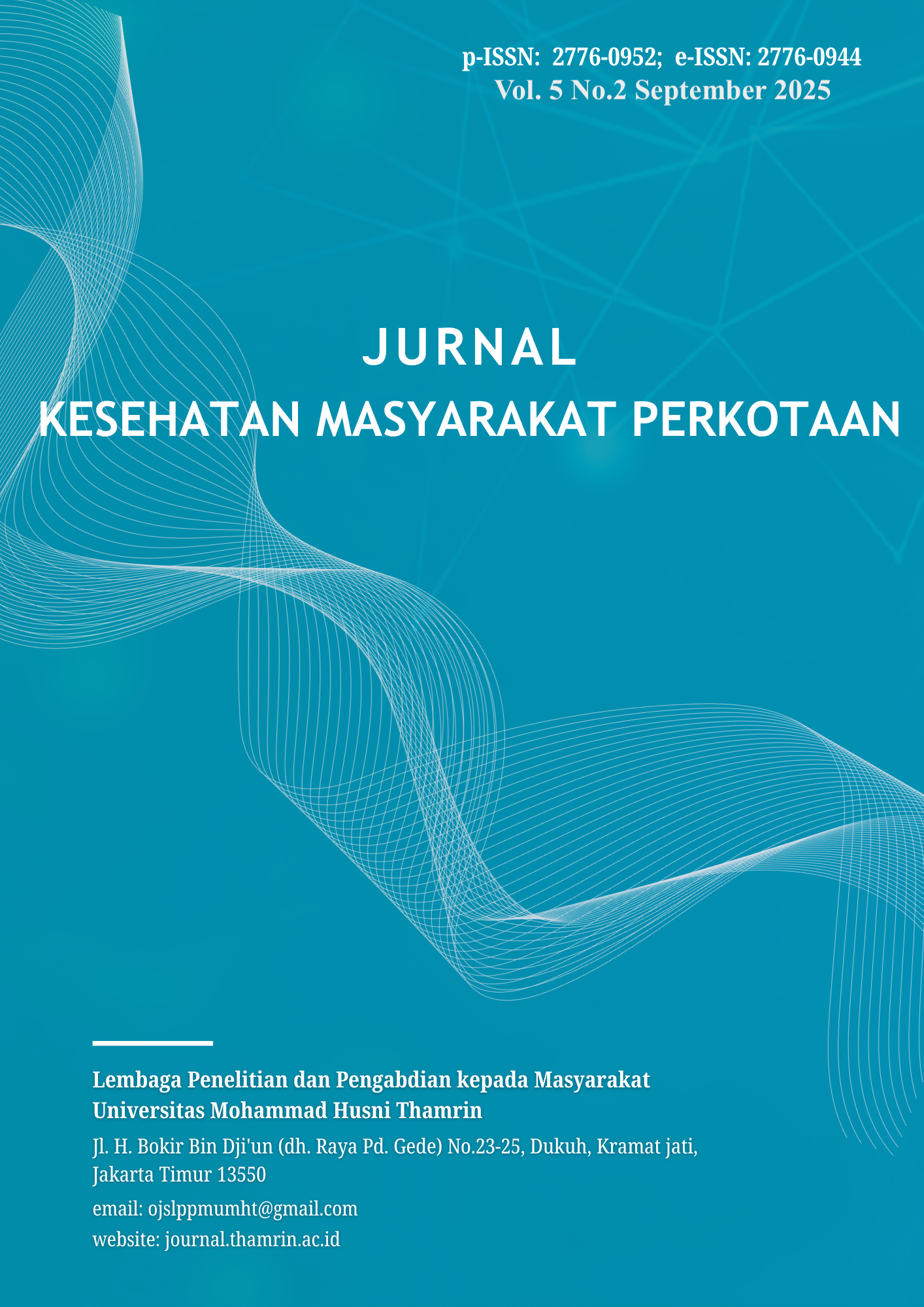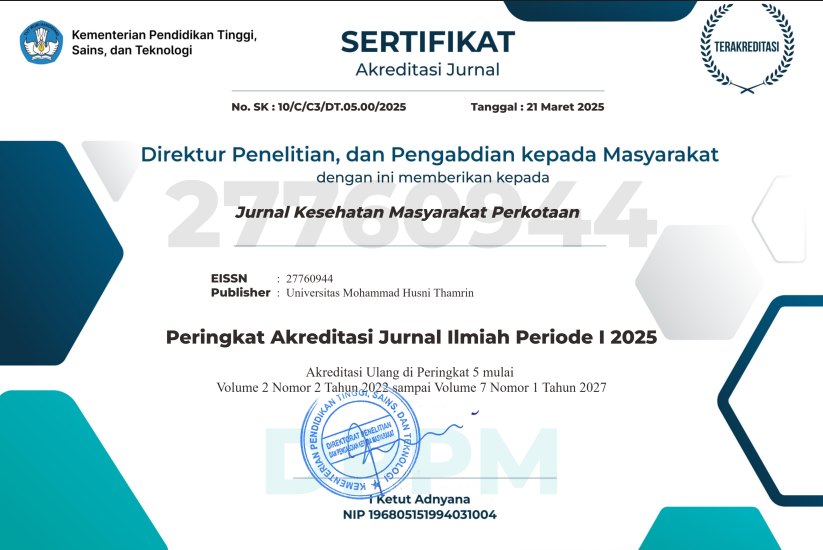The Relation of Food Taboo, Diet Patern and Anaemia Among Pregnant Women in Puskesmas Cipayung
DOI:
https://doi.org/10.37012/jkmp.v5i2.3066Abstract
Anemia is a global public health problem. The prevalence of anemia in pregnant women in Indonesia reaches 27.7%, while anemia in third-trimester pregnant women at the Cipayung Community Health Center in January–May 2025 was recorded at 14.35%. Several factors influence the incidence of anemia in pregnant women, including sociocultural factors, diet, income, and knowledge. A good diet for pregnant women should include sources of carbohydrates, protein, fat, vitamins, and minerals, tailored to the needs of the pregnancy. This study aims to determine the risk factors for anemia in pregnant women due to the influence of cultural taboos and dietary patterns. This study design uses a quantitative analytical method with a cross-sectional approach. This study was conducted in July 2025, the population was pregnant women who underwent ANC examinations at the Cipayung Community Health Center with a sample of 105 respondents. Data analysis of this study began with univariate data analysis, simple correlation tests, using the Chi-square method and subsequent analysis using multiple logistic regression tests. The results of the multivariate analysis study showed that the cultural variables of food taboos (p.value = 0.003 with OR 5.569), dietary patterns (p.value = 0.043 with OR 2.759) were associated with the incidence of anemia in pregnant women, nutritional adequacy (p = 0.003; OR = 5.113) was associated with the incidence of anemia. Suggestions for education to be carried out in the 20-35 year age group about dietary patterns and cultural food taboos.
Downloads
Published
How to Cite
Issue
Section
Citation Check
License
Copyright (c) 2025 Brian Sri Prahastuti, Siti Jumhati, Reni Meilani

This work is licensed under a Creative Commons Attribution 4.0 International License.
Jurnal Kesehatan Masyarakat Perkotaan allows readers to read, download, copy, distribute, print, search, or link to the full texts of its articles and allow readers to use them for any other lawful purpose. The journal allows the author(s) to hold the copyright without restrictions. Finally, the journal allows the author(s) to retain publishing rights without restrictions Authors are allowed to archive their submitted article in an open access repository Authors are allowed to archive the final published article in an open access repository with an acknowledgment of its initial publication in this journal.

Lisensi Creative Commons Atribusi 4.0 Internasional.











